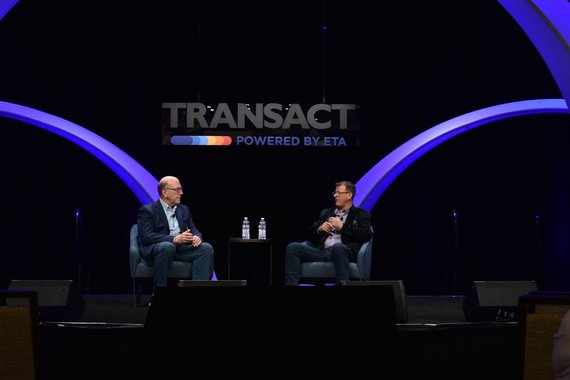
What happened in 2019? Our predictions reviewed
At the beginning the year we published 11 predictions for the payments industry for the past 12 months. In this article we look back the year to determine what we got right
There's no doubt that this year in payments was one if significant evolution. Most of them are; the sheer pace of development in this sector guarantees that a lot of individual developments and trends emerge as a result of tech innovation, changing consumer preferences, and new regulations.
At the beginning of the year we summarized our top trends to look out for in 2019, so with the end of the year approaching we can now take a look back and review our predictions.
Contactless adoption grew, but slowly.
Our projections about this being the year of contactless in the US were reflected by an increase in the volumes of payments, but there is still more to come in this area. There were certainly gains, but gains were slow. Even into August, questions were still being asked about whether contactless was the future or merely a fad. However, there's growth enough afoot to suggest that 2020 could be the real year of contactless, and we're already marking contactless growth as a trend again in 2020 in the making thanks to new moves from Visa, among others.
Security is still everything.
We began 2019 saying that “security is now everything” when consumers and businesses are deliberating between online payment methods and partners. Throughout 2019 and heading into 2020 it is now the case that “security is still everything.”
According to our research, 58% of consumers said that they would be concerned if they were able to buy goods and services online without being prompted for a password, even though 68% think that biometrics is a quicker and more efficient way of authenticating payments. And 53% of consumers believe that voice-activated technology is more convenient than traditional eCommerce devices, but only 37% trust that their financial data is secure when making a payment using a smarthome device. The future direction of travel of the payments industry will be determined by how these fears and concerns of consumers will be addressed; payments technology providers than cannot do this will not remain part of the landscape.
Blockchain's digital identity drive gains, but quietly.
There have been some gains on this front already, and as we have discussed in previous articles distributed ledger technology is already being looked at as a potential new approach to digital identity, especially around federated digital identity ecosystems that support the most stringent KYC/AML requirements (e.g. FATF 7B guideline), as well as delivering consumer privacy compliance, by design. With Forbes recently suggesting that the ultimate answer to digital identity is blockchain as recently as this July, further developments are likely.
Automation carried on.
While some problems have been spotted in the smart contract arena—at least one report noted that “Ethereum doesn't scale”—there have been advances in the automation space. Some developments in this space included the French Cybercrime Division turning to the Tezos blockchain for judicial expenses and a potential new means to address plastic in the ocean. Thanks to blockchain's data handling skills—data through blockchain is not only encrypted, but also chronologically stacked complete with time and data stamps—and accessibility, it's also being called upon as the next great weapon in the war on financial fraud. Look for it also to serve as the ultimate bridge—so far—between two great warring business concepts: convenience and security.
Open Banking implementation gaining.
While one of the big problems in payments starting 2019 was a lack of clarity around Open Banking implementation, clarity was already starting to be addressed as early as February. Delays in the SCA implementation provided little help for Open Banking's ultimate implementation, but with improvements on that front, the overall progress of Open Banking should be helpful.
Cash continues its reinvention.
For the past several years, the prevailing narrative has been the growth of “cashless societies”, and in some countries this has been supported by a decline in the value of cash in circulation and the percentage of transactions that are conducted in cash.
However, in countries where the decline of cash has been greatest over the past decade, this trend is in severe decline. One example of this is Sweden, the country that has been identified as furthest on the road to being completely cashless. The volume of cash in circulation in Sweden increased for the first time since 2008 last year, and we expect cash usage to remain stable or even grow further in the next year.
And cash has continued to grow as a payment method online as well; consumers that are concerned about sharing their financial details online or are financially excluded from being able to do so are increasing turning to eCash solutions to access the digital economy.
Were currently publishing our predictions for the payments industry in 2020. Click here to find out how we think the payments landscape is going to move forward in the next 12 months.




